On the trail of decay and dysfunctionality
with Felix Kiessling
“On the Trail of Decay and Dysfunctionality” is a thematic reportage through the eyes of photojournalist Fabian Brennecke, who accompanied Felix Kiessling on his research in urban space. These process photos showing Felix Kiessling producing a new series of works for his solo exhibition Taumel at Alexander Levy. They are accompanied by a text by Marietta Auras.
Text by Marietta Auras
Photos by Fabian Brennecke
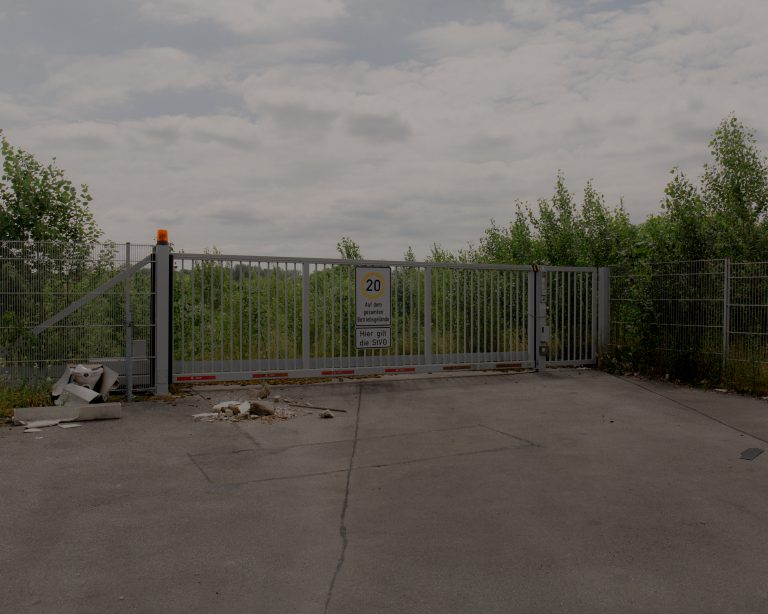
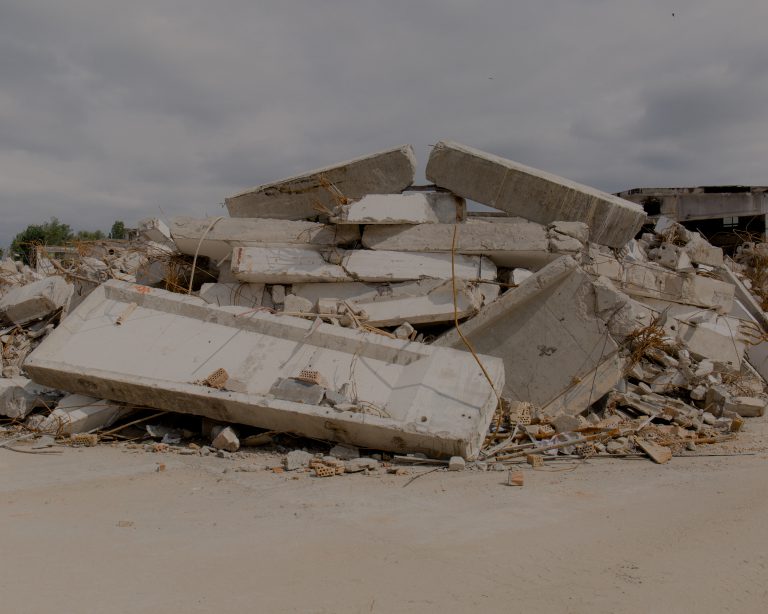
Collapsed buildings and, by decay, dysfunctional everyday objects in urban space: the damaged has a powerful attraction for Felix Kiessling, because it holds a form of truth.
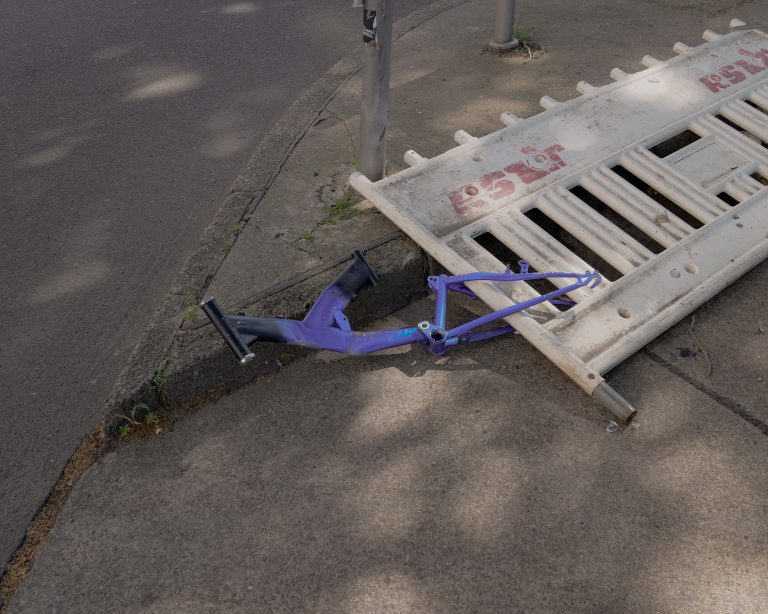
It is the aesthetics of an era, a social speculation, that arouses his curiosity. He is not only interested in the tragical, but rather in the comical aspects of material’s gestures and own life that express themselves independently of human activity.
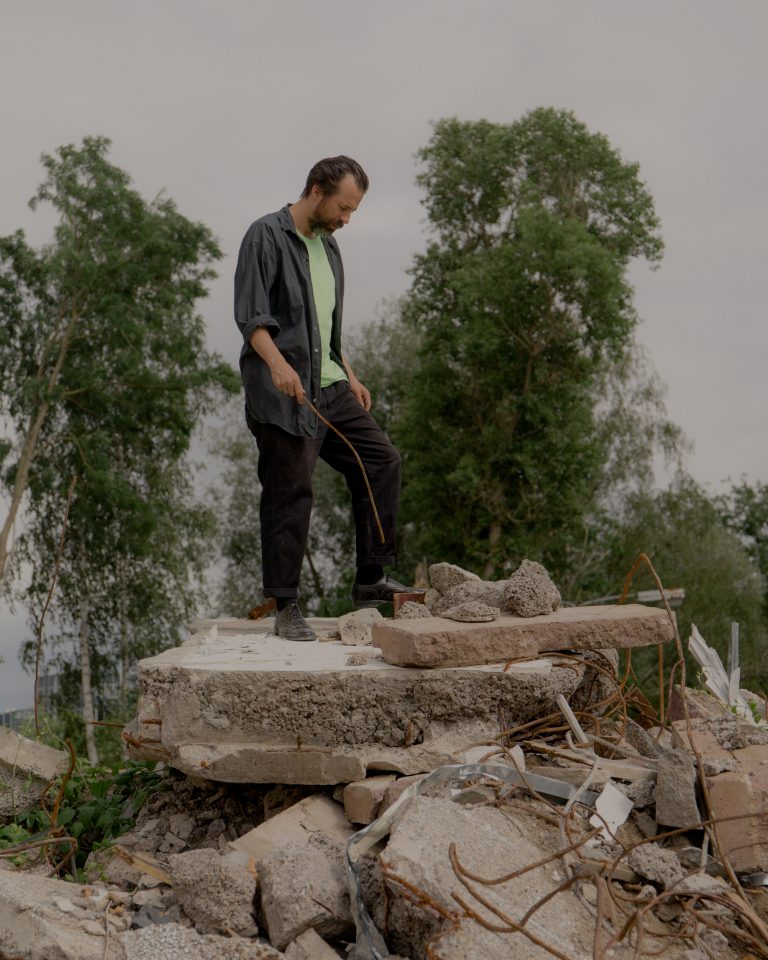
The research for his solo exhibition Taumel (Frenzy) leads into urban space, into the phenomena of a throw-away society in which things have become replaceable, and in which symbolic as well as material values reaches a historical low.
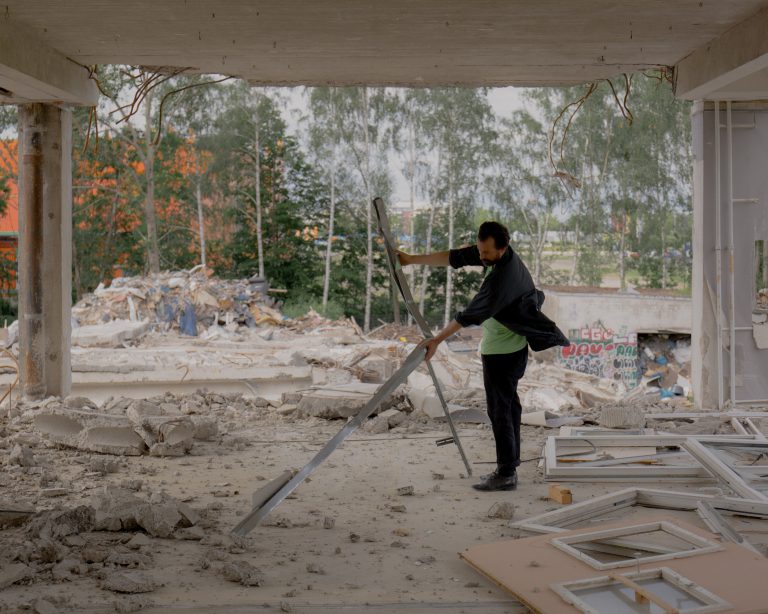
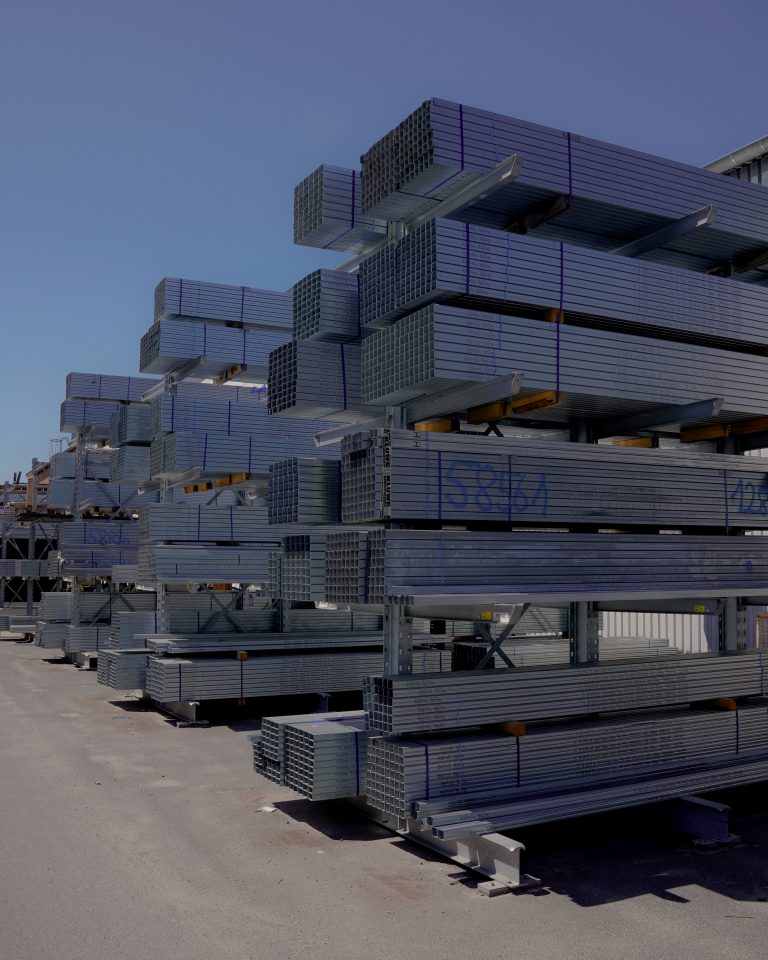
The exploration of urban materialism is part of Felix Kiessling’s ongoing engagement with commercial and standardized products such as iron bars, synthetic textile and aluminum sheet.
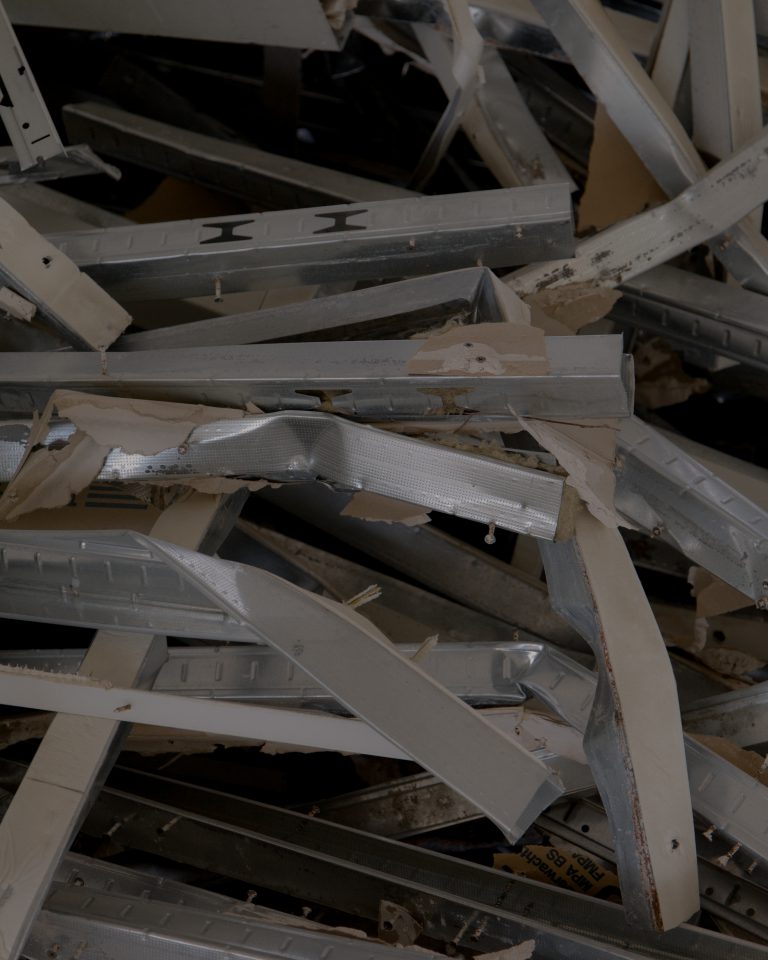
The agents of his phenomenological research are no longer just the raw materials, but rather everyday objects: bicycles, doors, drywall profiles – silent witnesses of a universal urban reality. We encounter them in urban or retort construction, in traffic or on the facade of an ordinary apartment building.
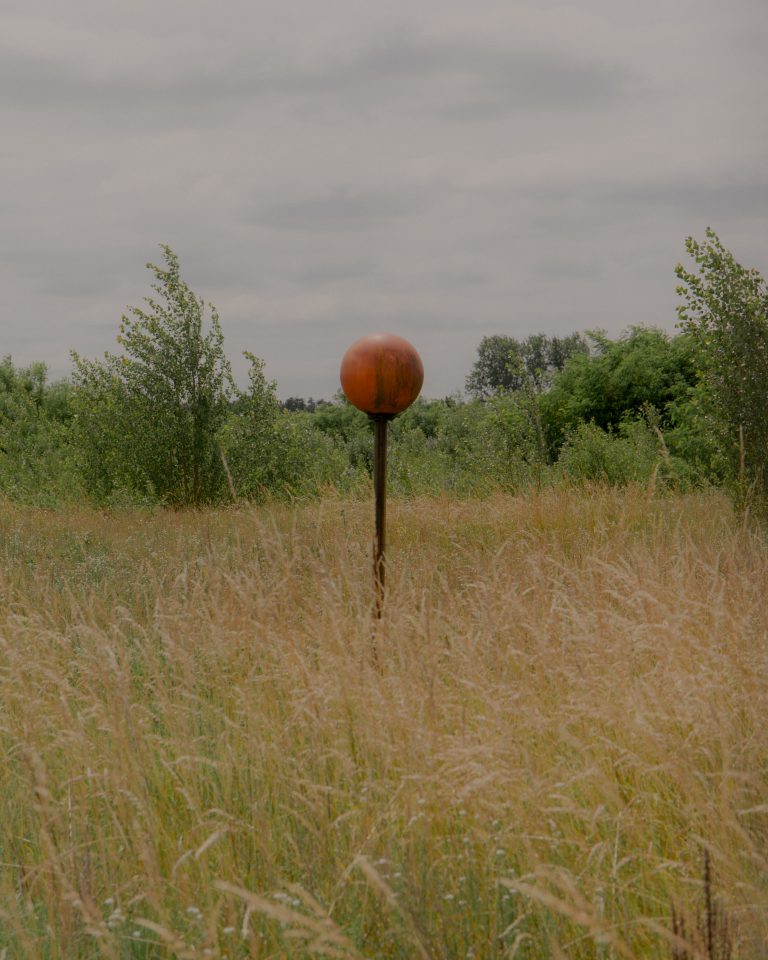
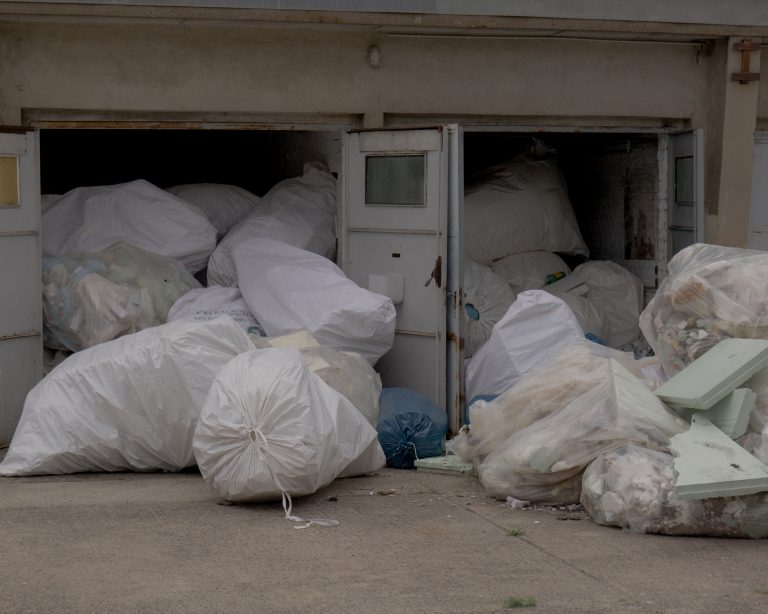
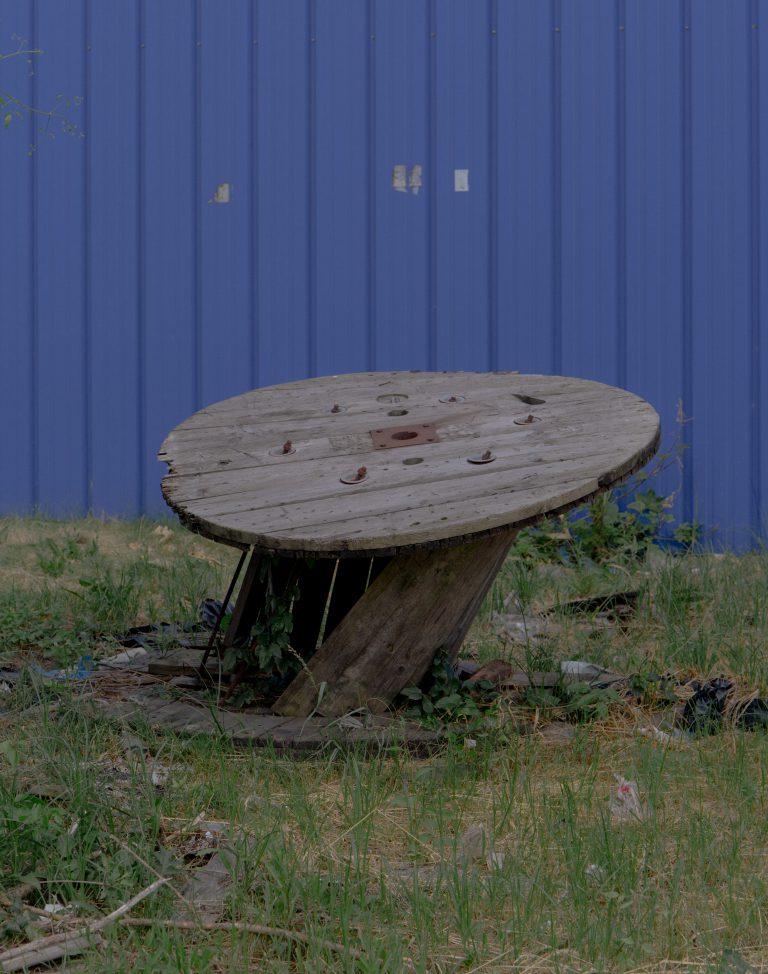
Detached from their initial function, the found objects can be read as symbols of a society that is moving towards a collective state of insecurity and despair. Confronted with a dead end unforeseen in the spirit of performance and progress, society is heading towards depression.
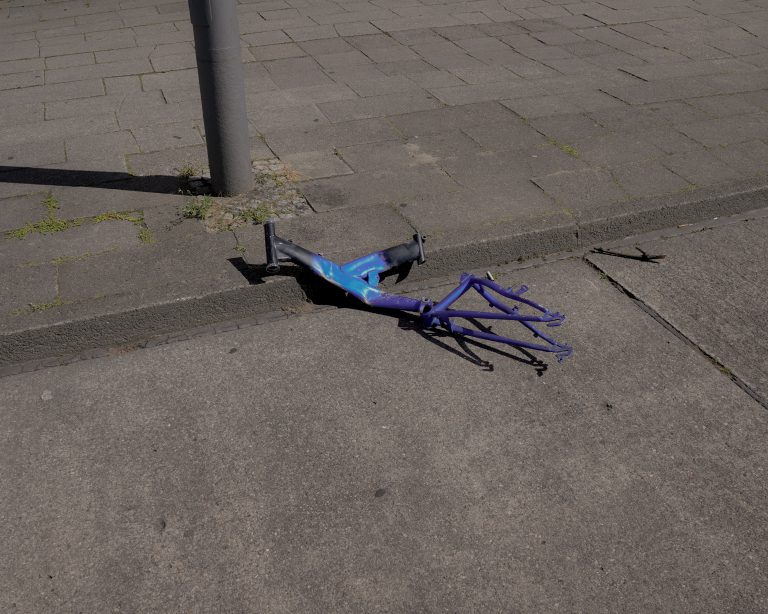
The trampled bicycle at the underground station entrance, the metal fire door, the abstract textile formations of lost or rejected clothing – they all bear witness to a condition whose powers and paradoxes are captured in the works of Felix Kiessling.
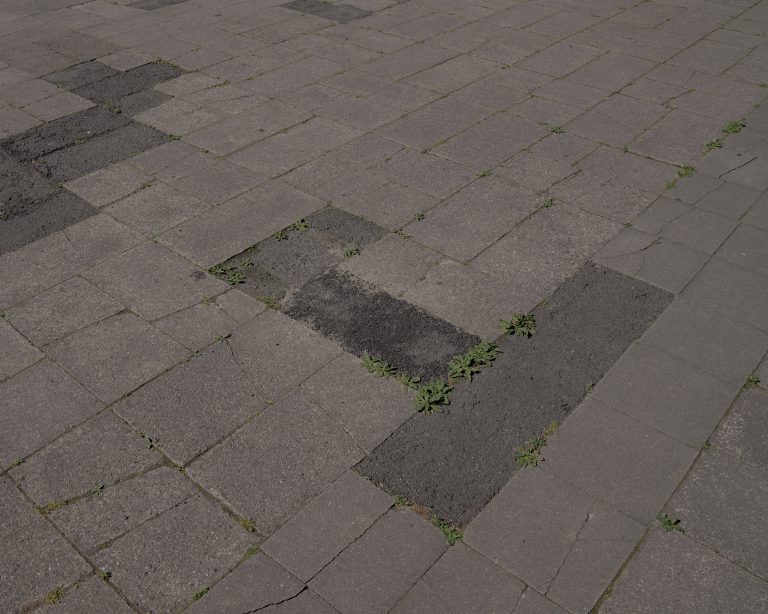
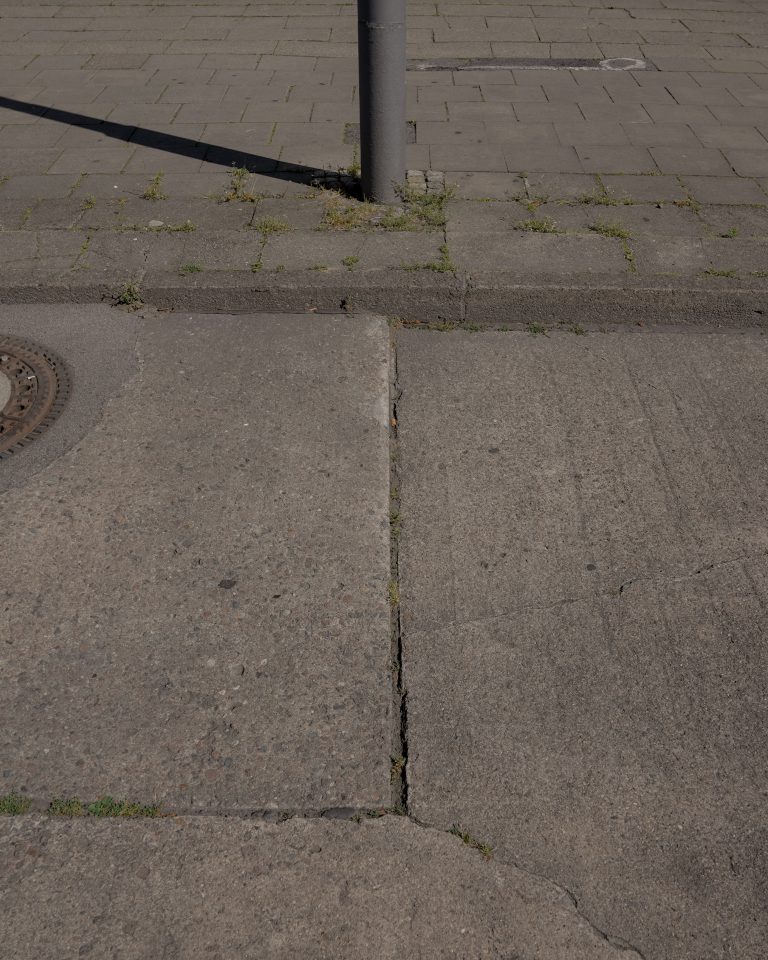
Above all, their senselessness hides a moment of hope, for the playful, the humorous and the uncontrolled can give a society defined by efficiency and economy the possibility to pause for a moment and adopt an alternative perspective.
